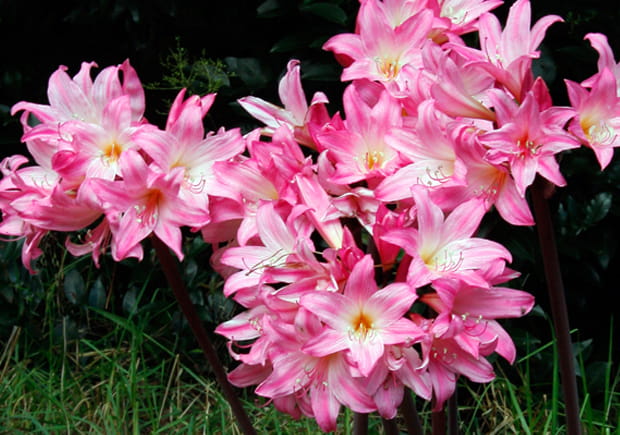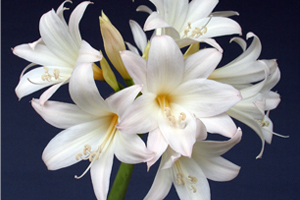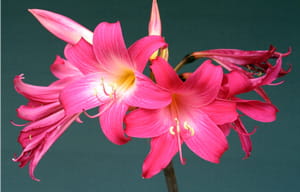Clivia and Amaryllis belladonna belong to the same family and both come from South Africa, but are in many respects opposites. Clivia needs some shade, while Amaryllis demands full sun. Amaryllis has bulbs from which the flowers emerge before leaves develop, Clivia has evergreen leaves and does not form a bulb. Clivia miniata flowers September-October, while Amaryllis flowers January-March. Clivia berries take nine months to mature and the seed may take three to four months to germinate, while Amaryllis berries mature in under a month and the seeds germinate almost as soon as they hit the ground.

What the two species have in common is the shape of flower, but the colour range is distinct. Wild C. miniata is orange from which other colours have been developed. The flowers of Amaryllis belladonna range from white through pinks to quite dark cerise.
While seen around the countryside, especially in farm gardens Amaryllis bulbs are not commonly seen for sale. This is because the bulbs become very large before they flower and smaller bulbs are formed. This takes around ten years from sowing and then the size of the bulbs is a problem.
Amaryllis grows through the winter and leaves die down during November. Bulbs will be offered from this website January- March. Seed will be offered March-April. Both bulbs and seeds are only available to the New Zealand market.
Amaryllis flowers can be both self-pollinated and cross-pollinated, so, for example, while seed taken from a white flowered plants grown in a block will produce predominately white flowers there is no guarantee that all the off spring will be white. Therein lies the fun of plant breeding, the magic of the anticipation of the unexpected.


Keith has developed a largish collection and is working to produce pure white flowers with no yellow throat colour, while at the other end of the spectrum he is developing dark cerise to crimson forms.